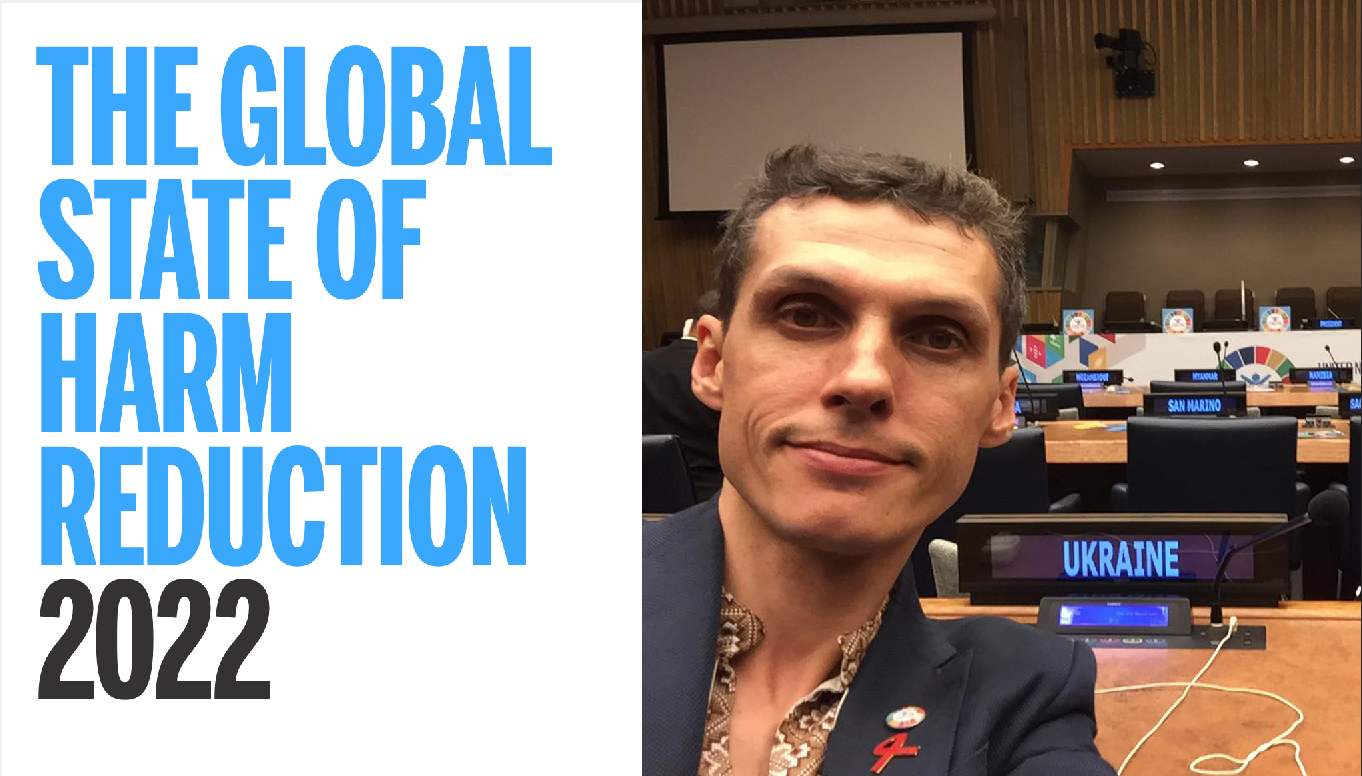A new report on the Global State of Harm Reduction 2022 shows an increase in the global use of solutions to reduce harm from HIV and the overdose epidemic.
According to the report, the number of countries implementing harm reduction services that prevent overdose deaths and the spread of infectious diseases has increased for the first time since 2014.
For the first time, the foreword to the report was written by a representative of the community of people who use drugs and he is Ukrainian – Anton Basenko, Community, Rights and Gender Advisor at the Alliance for Public Health and Program Manager at EATG.
Thus, he told the story of a woman from one of the eastern regions of Ukraine who uses drugs, which is an illustration of the strength and solidarity of the community of drug users. “Her story is one of many stories of networks of people who use drugs helping each other. Despite the number of destroyed facilities and displaced people who use drugs due to the war, I am proud to say that our global harm reduction family is unstoppable and our desire to help each other is so strong that we can only move forward…”
“…The report shows where we are today, colorfully and clearly, with facts and evidence. It shows the world we can create when people who use drugs, people who work in nongovernmental organizations, people who make laws and policies at the national and local levels come together; a world based on mutual respect that supports diversity, health, rights and freedom, a world free from judgment and stigma.”
Regarding the war, the report highlighted the extraordinary efforts of NGOs and civil society organizations in Ukraine and neighbouring countries since the Russian invasion of Ukraine in February 2022 to provide shelter, food, medicine and harm reduction supplies to Ukrainian regions that were cut off logistically or where people could not leave their homes. Support for the evacuation of people who use drugs from Donetsk and Luhansk was noted, as well as ensuring that community and civil society organizations could continue to provide harm reduction services in Donetsk.
To get acquainted with the Alliance’s situational reports on the work of the Humanitarian Committee, the situation with SMT, prevention, de-occupied regions, etc.
It should be noted that as of 01.10.2022, more than 19 thousand patients are on the state substitution maintenance therapy program in Ukraine, of which almost 1600 patients are IDPs. The largest number of IDPs as of 1.09.22 was in Lviv, Dnipropetrovsk, Zaporizhzhia, Ivano-Frankivsk, Kirovohrad regions. The percentage of patients receiving SMT for self-administration for 7-30 days increased to 91%, compared to 84.9% in early February.
Despite all the positive changes and development of the OST program during martial law due to the coordinated work of the Alliance, the Public Health Center, NGOs and patient organizations, unfortunately, the program is experiencing extremely negative consequences, so the % of retention in the OST program for at least 6 months from the start of treatment decreased from 83.1% (as of 23.02.2022) to 78.6% as of 01.10.2022. In July-September alone, about 676 patients in Kherson region stopped receiving OST without the possibility of continuing treatment, as the drug at most sites ran out and was seized by the occupying authorities, and it is almost impossible to leave Kherson region for safer regions. Also, since the beginning of the war, patients from the entire Luhansk region, Donetsk (Mariupol and Bakhmut) and Zaporizhzhia (Berdiansk and Melitopol) have partially left for safer regions to continue treatment, some of them have not managed to leave the temporarily occupied territories.
With the support of the Alliance for Public Health in Ukraine, NGOs provide comprehensive support to OST patients: psychosocial, humanitarian assistance, transportation services.
Link to the report: https://bit.ly/3UbKkt5

